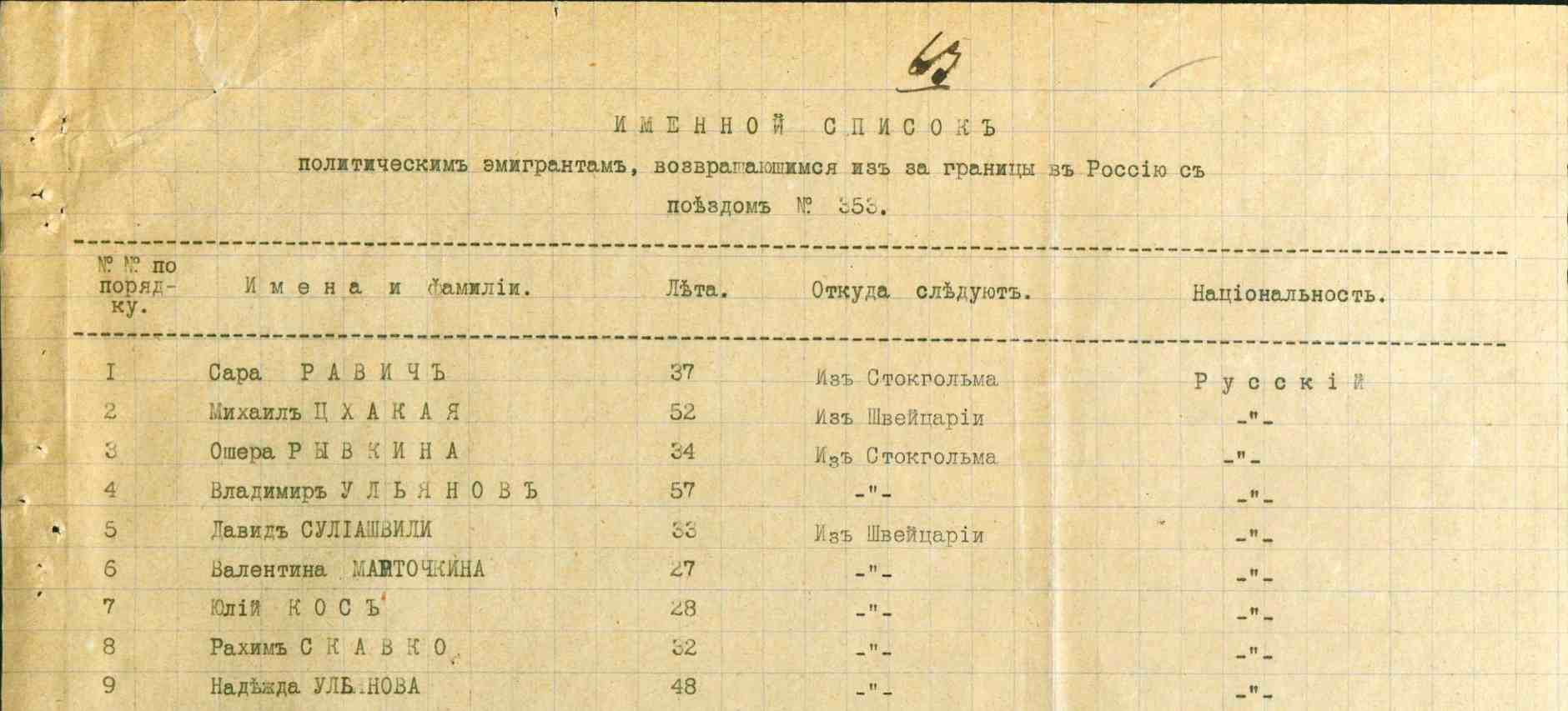Lenin, who had been in exile in Switzerland, returned with his family to Russia through Germany, Sweden and Finland in April 1917. He crossed the border of the Empire in Tornio, like many others who returned to Russia after the revolution.
What was extraordinary in Lenin’s return was that it would not have been possible without Germany’s consent and support. He and his entourage travelled through Germany in a sealed railway car. The German leadership hoped that Lenin, who was known to be a hardline revolutionary, could undermine Russia and its provisional government.
Among Finns outside the labour movement, Lenin was still a relatively unknown figure. Viipurilainen Työ reported that Alexandra Kollontai, who had returned to Russia from Norway on 2 April 1917, had conveyed greetings from Lenin in St. Petersburg. On 8 April 1917, Helsingin Sanomat published Novoye Vremya’s article on the activities of Lenin-led Bolsheviks in St. Petersburg.
“Much more disturbing, however, is the fact that the majority of the Military and Workers’ Council is still unable to reach a dominant position with respect to the minority of workers who do not take into account the international aspect or the patriotic obligation that the country expects the working class to fulfil. Said social democratic faction in St. Petersburg, led by Lenin and supported by Pravda, unfortunately enjoys popularity among the poorest people in St. Petersburg.
During the early days of the revolution, these people demanded an end to the war. Now they do not want to wait for the war to end, but seek to implement all social reforms immediately.
Apparently, these socialists are not at all interested in national defence or the views of the leaders of international socialism. Indeed, on 3 April, Pravda urges people to ‘join the revolutionary battle against all imperialistic circles.’ These circles include, according to Pravda, ‘all countries that are at war unless these countries abandon the war and make peace immediately.’”
“Why did the German government rush to do a favour?”
On 18 April, many Finnish newspapers reported on Lenin’s journey to Sweden through Germany. Karjala reported already on 15 April that the provisional government had been informed about the return of Lenin’s supporters with Germany’s assistance. Lenin arrived in St. Petersburg on 16 April. The party leader, who had returned with the assistance of Germany, was not welcomed by all. Uusi Suometar cited Russian newspapers on 20 April 1917. Ryetch condemned Lenin in no uncertain terms:
“Mr. Lenin and his comrades, who are so keen to get to Russia, should have asked themselves why the German government was so eager to do them this favour and let citizens of an enemy country travel through their territory. The answer should be obvious. The German government hoped that Mr. Lenin and his comrades would be of use to German interests; it relied on the Bolshevik leader’s pro-German views.
Even the possibility of such an answer, in our opinion, should have prevented any responsible political official from accepting such an offer and putting his nation at risk. But Mr. Lenin and his comrades did not want to take this into account, which is evidence that they are completely alienated from their country or that they wished to boast about their journey, which is not at all in keeping with the general attitude to a war in which the blood of the people flows like rivers.”
On 20 April 1917, Kansan Lehti reported on a joint meeting of Russian socialist organisations held on 17 April in the Duma Chamber, where Lenin’s speech raised strong opposition. He proposed that all Social Democratic parties should be merged into a new communist party. Lenin’s “utopian ideas” were defended by Alexandra Kollontai alone.
“Chkheidze pointed out that, by all accounts, the Russian revolution attracts Lenin, but no harm is done, even if Lenin stayed out of the revolution. This remark was greeted with loud applause.”
On 22 April, Työmies reported briefly that Lenin had joined the editorial staff of Pravda. Two days later, Työmies published the theses presented by Lenin on 17 April.
When Lenin crossed the border at Tornio, he was accompanied by an entourage of 33 people. Among them were Lenin’s wife Nadezhda Ulyanova (Krupskaya) and Grigory Zinoviev with his family.


